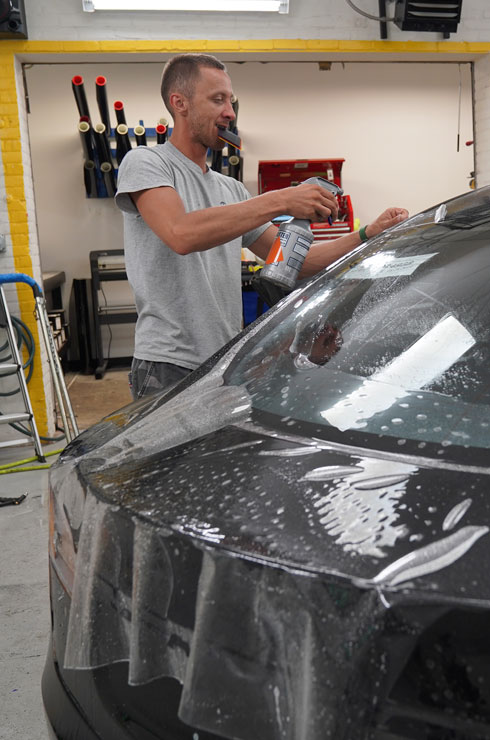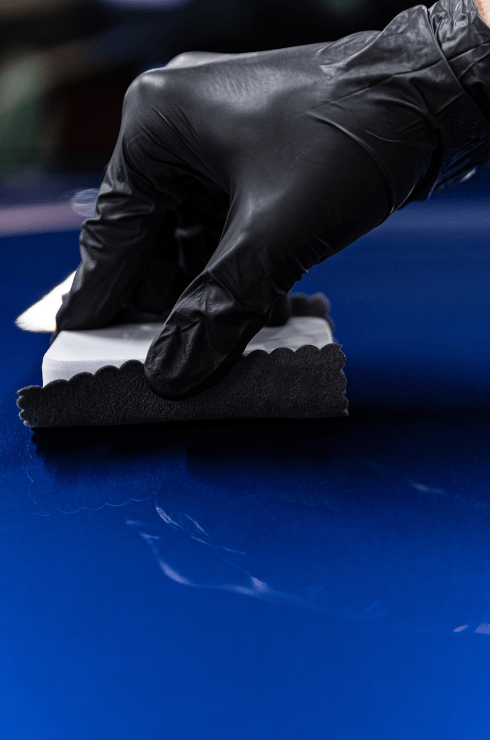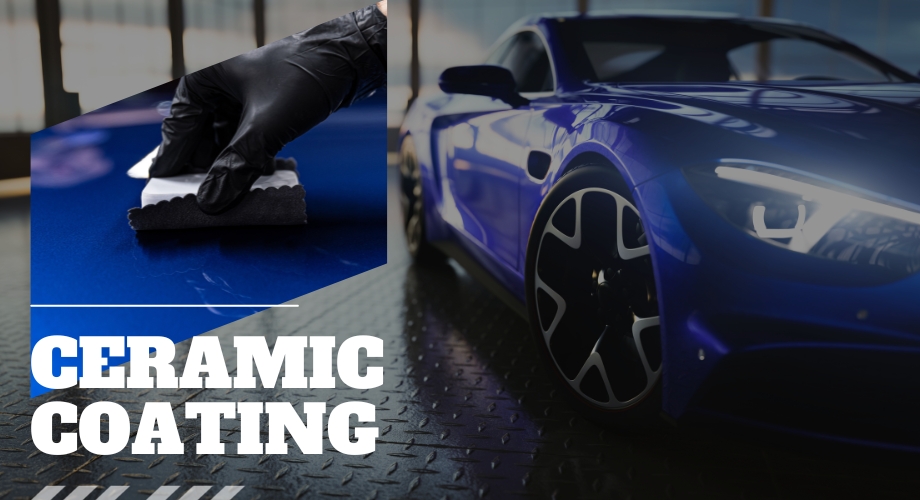



































































































































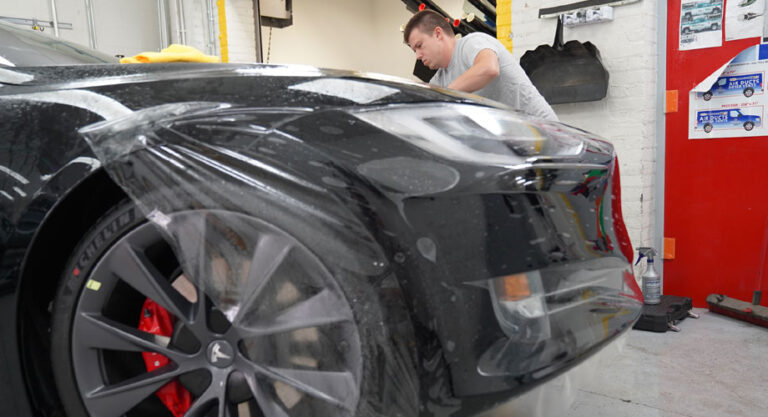
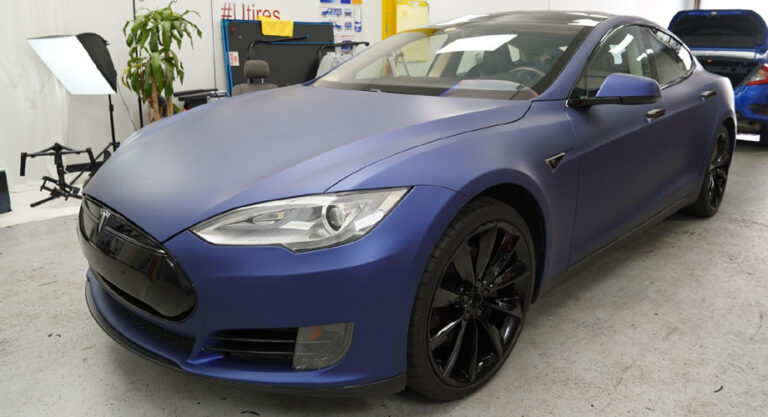




















































































































































Keeping the car’s interior clean and shiny is an ongoing challenge for all car owners. Luckily, a modern market offers efficient solutions for maintaining the immaculate look of the vehicle’s paintwork. The two most popular options are wax and ceramic coating.

But which is better – the eco-friendly wax that has been used for decades or ceramic coating, a technology that has taken the automobile world by storm? Both are widely used. This article will take through all the characteristics of wax and ceramic coating, as well as their pros and cons.
Comparing traditional wax and ceramic coating
First of all, let’s study the key characteristics of these two protective options to have a clearer understanding of how they work on your vehicle.
Gloss and shine
Ceramic coating. It creates a glossy surface, enhancing the shine of your vehicle’s paint. The car gets a deep, reflective appearance. This coating guarantees a long-lasting, high-quality finish.
Wax. You will also achieve a nice paint shine with wax, but it may not be as long-lasting as the effect after ceramic coatings. Frequent reapplication is necessary to maintain the desired appearance.
Protection
Ceramic coating. This solution is known for its exceptional hardness and is ideal against various environmental contaminants, including UV rays, bird droppings, tree sap, and road dirt. It is a strong barrier against various types of paint damage.
Wax. The protective properties of wax are much weaker when it comes to harsh elements.
Durability
Ceramic coating. Forming a semi-permanent chemical bond with the car’s surface, ceramic coating is highly durable and long-lasting. After proper installation, the ceramic coating will perform well for more than a year.
Wax. This type of coating requires more frequent reapplication. In simple words, wax acts as a sunscreen and wears off in a few weeks.
Type of bond
Ceramic coating. The nanotechnology allows the ceramic coating to form a chemical bond with the paint – it penetrates the microscopic pores of the paint and forms a sturdy layer.
Wax. This type of sealant bonds to a car surface mechanically. It simply sticks to the paint, forming a very thin layer on top of it.
Special properties
Ceramic coating. It is known for its hydrophobic properties, which cause water to bead and roll off the paint surface. It is much easier to clean and maintain the vehicle after applying ceramic coating.
Wax. While wax has some hydrophobicity, it is generally not as effective as ceramic coatings in repelling water and preventing water spots.
Application and maintenance
Ceramic coating. Applying a ceramic coating is a more complex and time-consuming process that often requires professional installation. Once applied, it requires minimal maintenance.
Wax. This protection is easy to apply and can be done by most car owners without outer help. However, it needs to be reapplied more frequently, usually after a few weeks.
Cost
Ceramic coating. Ceramic coatings are generally more expensive than wax. The initial cost includes both the product and professional installation.
Wax. This solution is cost-effective and readily available. You can apply it yourself or have it done at a relatively low cost.
The pros and cons of wax
Wax has been used in the automobile industry for decades for enhancing paint’s shine and protecting the car’s exterior. It comes in different forms – pastes, liquids, and sprays. Here are their strong and weak points.
The advantages of wax:
- Ecologically clean. Car wax is a choice for environmentally conscious consumers. Unlike synthetic sealants, waxes contain natural materials. Many waxes are made from carnauba wax that is extracted from palm trees. So, waxes can be called eco-friendly sealants
- User-friendly. Car waxes are affordable, widely available, and easy to apply. Even novice detailers can use them with ease. Their simple application and quick drying time make them especially popular among DIY car enthusiasts.
- Exceptionally shiny. Car waxes, especially carnauba wax, flawlessly mask all paint imperfections. A waxed car acquires a lustrous and polished appearance.
- Affordable. Car wax is an option for any budget. It is affordable e to car owners with varying budgets, although the quality depends on the price.
- Water-repellent. The Carnauba component allows the wax to create a slick surface, and liquids slide off it effortlessly.
The disadvantages of wax:
- Low protection level. Car wax provides only a thin layer on top of the paint and offers minimal defense against various types of environmental damage.
- Not durable. Even the highest-quality wax products will last not more than several weeks, after which they lose their properties. This short lifespan results in the need for more frequent reapplication.
The pros and cons of ceramic coating
Ceramic coating is a prime paint protection solution. It is a liquid polymer that forms a robust bond with your car’s paint surface after curing and turning into a hard layer. Ceramic coating offers excellent protection against environmental harm and everyday wear and tear.
Advantages of ceramic coating:
- Durable. Thanks to nanotechnology, ceramic car coatings work more effectively than any other paint protective means. It acts as an additional layer of skin over the paint, protecting it from all types of damage.
- Hydrophobic. Ceramic coating simplifies car washing and imparts a glossy sheen to your vehicle. Besides, it effectively insulates the car surface from all types of precipitation, thus protecting it from corrosion.
- UV-protective. Ultraviolet rays harmfully affect the car’s paintwork, increasing oxidation and consequently fading. Ceramic coating works as a shield that reflects sunlight and preserves paint.
- Resistant to environmental threats. Ceramic coating acts as a shield against road debris, bird droppings, and acid rain, preserving your car’s finish.
- Exceptionally shiny. Your car surface will look like new after the ceramic coat treatment.
Disadvantages of ceramic coating:
- Time-consuming procedure. The application of ceramic coating demands skills and experience. You also need patience during the curing process. Additionally, maintaining a clean car is essential to prevent dirt from adhering to the coating.
- Installation intricacy. It is rather challenging for the majority of car owners to install ceramic coating at home. You can expect the best outcome if you entrust the installation to experts.
- High cost. Ceramic coating is not a low-budget solution. It involves expensive ceramic products and costly installation services.
our latest news!
Do you still need to wax after ceramic coating?
Ceramic coatings are designed to offer all-in-one, long-lasting protection, eliminating the need for additional waxing. Using wax and ceramic coating together is more trouble than benefit. Applying wax over a ceramic coating will immediately deteriorate, wasting your effort and money.
What lasts longer: wax or ceramic coating?
Ceramic coating is much more durable than wax. While wax typically lasts for a few weeks, ceramic coatings can provide protection for a year and more when applied by professional installers and properly maintained.
What car coating is more affordable: ceramic or wax?
Wax is much cheaper than ceramic coating. Wax products are typically budget-friendly and widely accessible, making them a cost-effective choice for car owners. In contrast, the ceramic coating requires an upfront investment due to the high cost of the product and the labor involved in the application.
Is ceramic coating better than regular wax?
Ceramic coating is unquestionably the optimal choice for safeguarding the paint of your car, truck, or SUV. It is effective against the harmful impacts of UV radiation, bug splatter and road debris, and it can even withstand a high-pressure car wash.
Wrapping up
Summing up the above, both options are good for the car’s paint protection. However, if you are looking for a durable shield for your car’s paint, ceramic coating is the right solution. Once applied by professionals, it powerfully safeguards against UV rays, oxidation and environmental contaminants. It will serve you for at least 12 months and even more. Wax is a more budget-friendly option of paint protection but is also much weaker. Besides, it needs to be reapplied every few weeks. Thus, if you regularly drive in harsh weather conditions and have no time for frequent waxing procedures, the choice is obvious – ceramic coating. Although the cost is higher, it will save you time and let you forget about paint imperfections.





























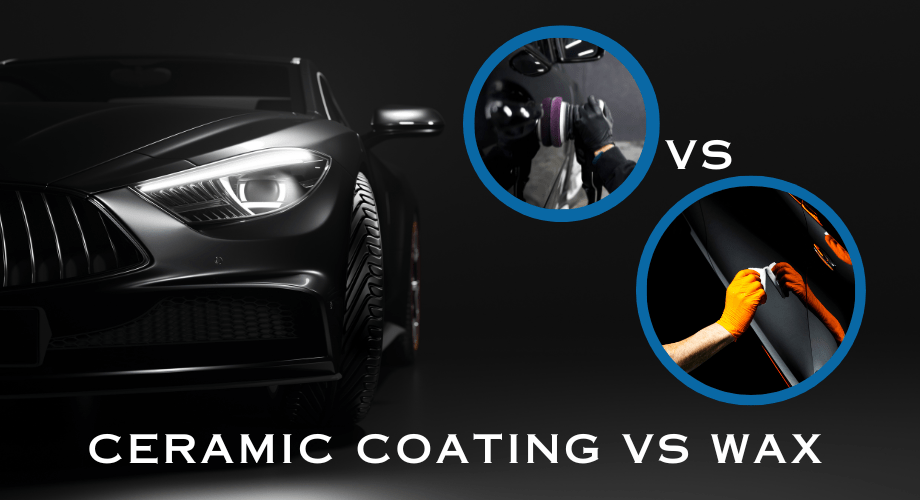
 Send a message
Send a message Send a message
Send a message